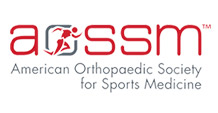

- Self-Replicate
- Differentiate into
multiple tissues - Bone
- Cartilage
- Muscle
- Fat
- Fight Apoptosis
(Cell Death) - Reduce Inflammation
News Updates
Adipose-derived stem cell-based optimization strategies for musculoskeletal regeneration: recent advances and perspectives
Musculoskeletal disorders are the leading causes of physical disabilities worldwide. The poor self-repair capacity of musculoskeletal tissues and the absence of effective therapies have driven the development of novel bioengineering-based therapeutic approaches. Adipose-derived stem cell (ADSC)-based therapies are being explored as new regenerative strategies for the repair and regeneration of bone, cartilage, and tendon owing to the accessibility, multipotency, and active paracrine activity of ADSCs.
Ankle Sprain: United States’ Leading Stem Cell Therapy for Ankle Sprains
Ankle sprains are among the most common musculoskeletal injuries, affecting millions of individuals worldwide, from professional athletes to everyday people. The quest for effective treatment options has led to significant advancements in regenerative medicine, particularly stem cell therapy. In the United States, this innovative approach is setting new standards for healing and recovery, offering hope and enhanced outcomes for those suffering from ankle sprains.
Modified Mesenchymal stem cell, platelet-rich plasma, and hyaluronic acid intervention in early stage osteoarthritis: A systematic review, meta-analysis, and meta-regression of arthroscopic-guided intra-articular approaches
Mesenchymal stem cells (MSCs) hold promise for osteoarthritis (OA) treatment, potentially enhanced by combining them with platelet-rich plasma (PRP) and hyaluronic acid (HA). This study aimed to assess the synergy of MSCs, PRP, and varying HA doses, and determine optimal MSC sources to treat early-stage OA in the perspective of Lysholm score, VAS Score, KSS score, and WOMAC score.
Cell-Based Therapies for Rotator Cuff Injuries: An Updated Review of the Literature
This review focuses on non-surgical treatment options for rotator cuff injuries and highlights the potential of mesenchymal stem cells (MSCs) as a potential regenerative approach. MSCs, sourced from various tissues like bone marrow and adipose tissue, exhibit promising mechanisms in vitro, influencing tendon-related gene expression and microenvironment modulation.
Tiny device could help improve safety, effectiveness of cell therapy for spinal cord injury patients
A tiny device built by scientists at MIT and the Singapore-MIT Alliance for Research and Technology could be used to improve the safety and effectiveness of cell therapy treatments for patients suffering from spinal cord injuries.
Artificial cartilage with the help of 3D printing
Growing cartilage tissue in the lab could help patiens with injuries, but it is very hard to make the tissue grow in exactly the right shape. A new approach could solve this problem: Tiny spherical containers are created with a high-resolution 3D printer. These containers are then filled with cells and assembled into the desired shape. The cells from different containers connect, the container itself is degradable and eventually disappears.
Clinical applications of stem cell-derived exosomes
Although stem cell-based therapy has demonstrated considerable potential to manage certain diseases more successfully than conventional surgery, it nevertheless comes with inescapable drawbacks that might limit its clinical translation. Compared to stem cells, stem cell-derived exosomes possess numerous advantages, such as non-immunogenicity, non-infusion toxicity, easy access, effortless preservation, and freedom from tumorigenic potential and ethical issues.
Read More

 For Appointment
For Appointment



 Testimonials
Testimonials





